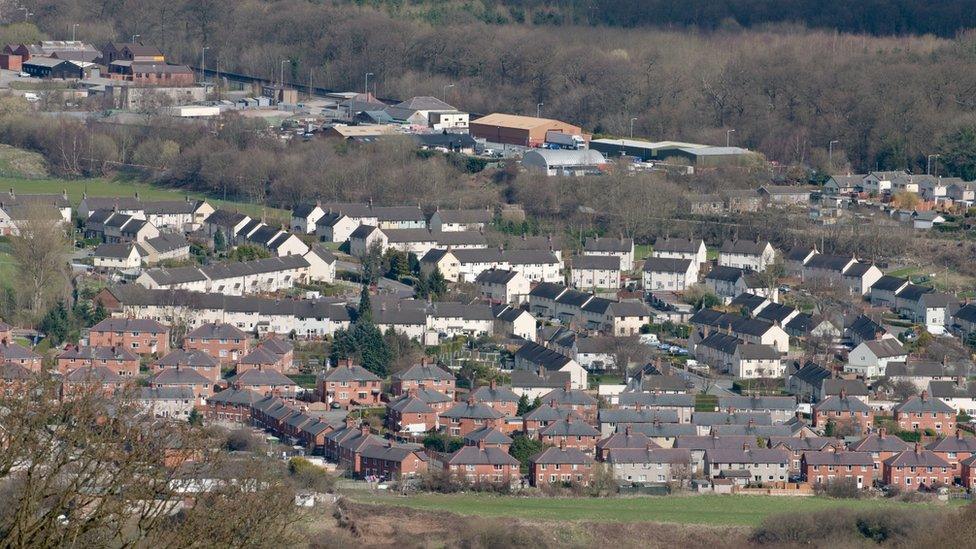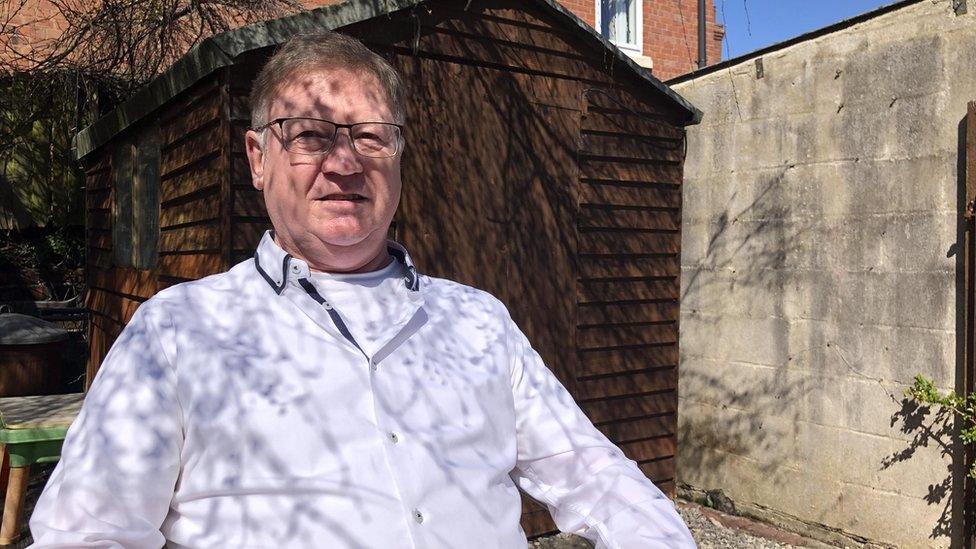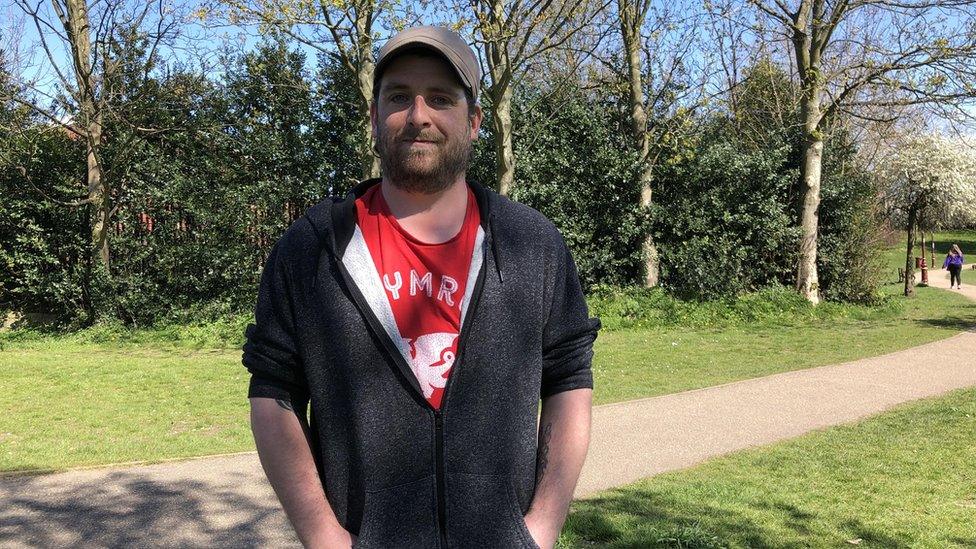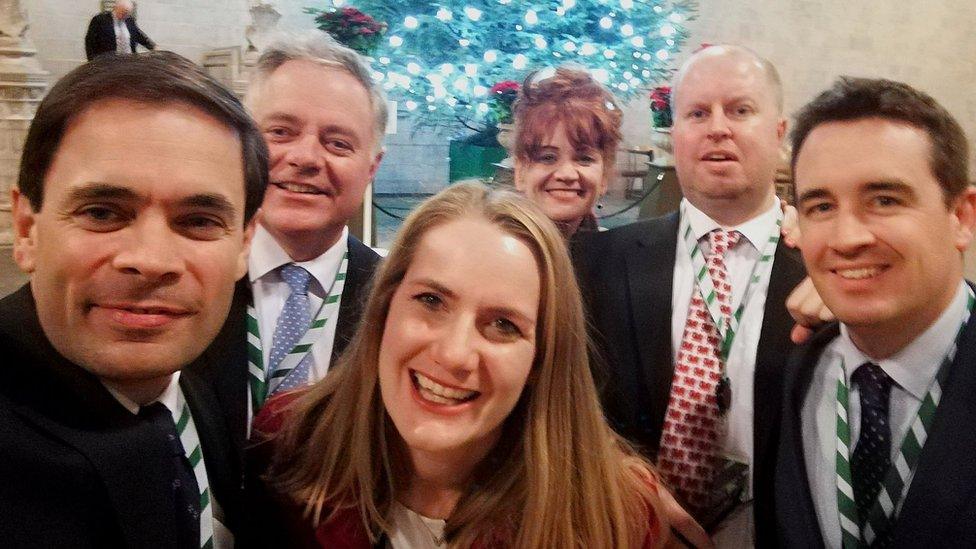Senedd 2021: What happened to Labour's 'red wall' in Wales?
- Published

Areas of north-east Wales that had been Labour for generations lost many seats to the Conservatives
Brexit, abandonment, disillusionment - whatever the reason - the "red wall" of north-east Wales fell in 2019.
The so-called "red wall" refers to an area of traditional Labour strongholds stretching from north-east Wales through parts of the Midlands, Lancashire and Yorkshire.
Like many of them at the last election, these communities voted Conservative for the first time in generations.
Parties have been trying to find out - was this just a one-off?
Built on solid foundations, Ruabon's red bricks have been the cornerstone of houses and workplaces across Britain since the Victorian era.
The terracotta clay was even used in Cardiff Bay's pierhead building and it is ubiquitous across the Wrexham and Clwyd South constituencies.

Steven Vale was one voter who switched to the Conservatives in the 2019 general election
Steven Vale runs a patisserie in Wrexham and was on of the voters who opted to vote Conservative over Labour in 2019.
He feels Brexit was responsible for some people turning their back on Labour at that general election campaign.
He said: "I did use to vote Labour but then, as I progressed in business and in my career, I changed to Conservative.
"I think the main reason people switched from Labour to Tory in the last election was purely a Brexit-driven deal and the election coming up is more to do with the grassroots of the parties."
Can't see the map? Click here, external

But was Brexit the only reason for a change of loyalties?
Deborah Mattinson is the author of Beyond the Red Wall and said former Labour strongholds have felt abandoned by the party.
"A lot of people talked about being left behind. They feel that their places are neglected, they feel that their high streets are declining, there are fewer jobs, fewer opportunities and fewer things for young people to do.
"They have a whole list of complaints about the area they live in - although they love the area very much - and basically a lot of that happened on Labour's watch."
There are relics of heavy industry throughout north-east Wales from Brymbo steelworks to Bersham colliery.

Brian Eadon said Labour had tried "very hard" to alleviate Tory legacy from the 1980s
Retired NHS pharmacist Brian Eadon, from the Ceiriog Valley in Clwyd South, said some of those who switched allegiances in 2019 were attacking a party which has tried to help communities like theirs recover.
"The Welsh Labour government has worked very hard to try to alleviate some of the things that were carried out by the UK Tory government in the '80s, like the decimation of heavy industry," he said.
"Labour has worked very hard to make sure there are jobs for people in north Wales."

SIGN UP FOR WALES ALERTS: Get extra updates on BBC election coverage


Delwyn Derrick said there were alternatives to voting Conservative if people were "disillusioned" by Labour
Delwyn Derrick, from Wrexham, said there was another way for those who feel disillusioned by both Labour and Conservative and that his town "has to come first".
He added: "What happens in Wales - or the greater UK - is only a small part of what we need to see happening in our town.
"In that way Plaid offers an alternative, it doesn't have to be a two-party system.
"If we look at politics they way we should be - electing local candidates - there is only one candidate and it's Plaid Cymru, because they're local"

Sybil Bremner chooses not to align herself with one political party
But some, like 89-year-old Sybil Bremner from Ruabon, who produces the area's weekly newsletter, prefer not to align themselves with one particular party.
She said: "I go for the person who's going to do the most for us. If I see a person who's going to go with it and get us there then that's what I'll do."
Despite the 2019 results, Labour still holds the majority of north-east Wales seats in the Senedd with five of the six seats.
Clwyd West is the exception and is held by the Conservatives.

POLICY GUIDE: Who should I vote for?
FIRST TIME: Will 16-year-olds vote?

- Published29 April 2021

- Published22 April 2021

- Published11 December 2020

